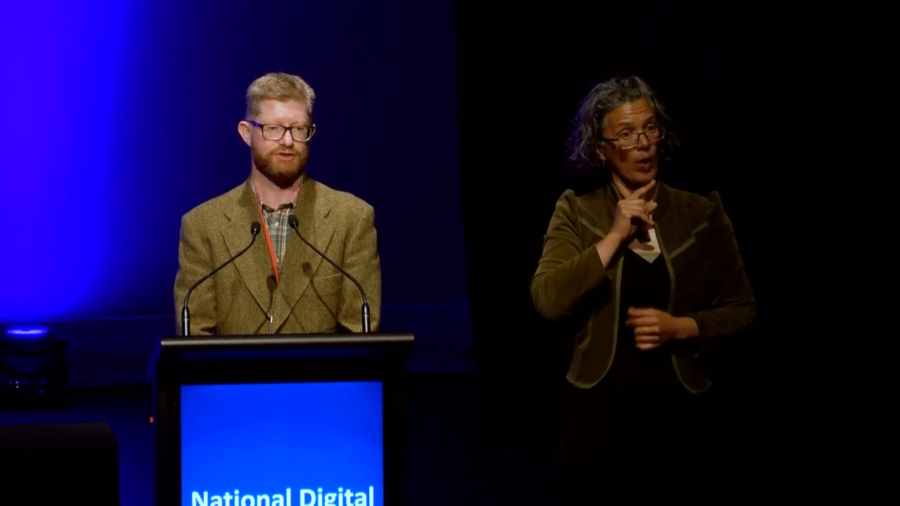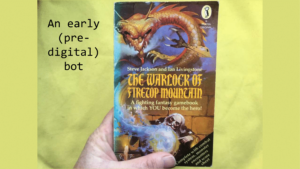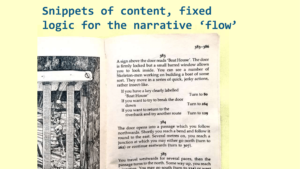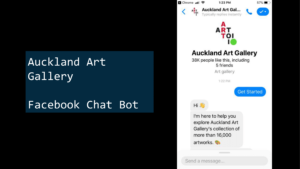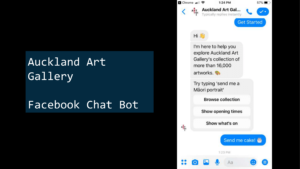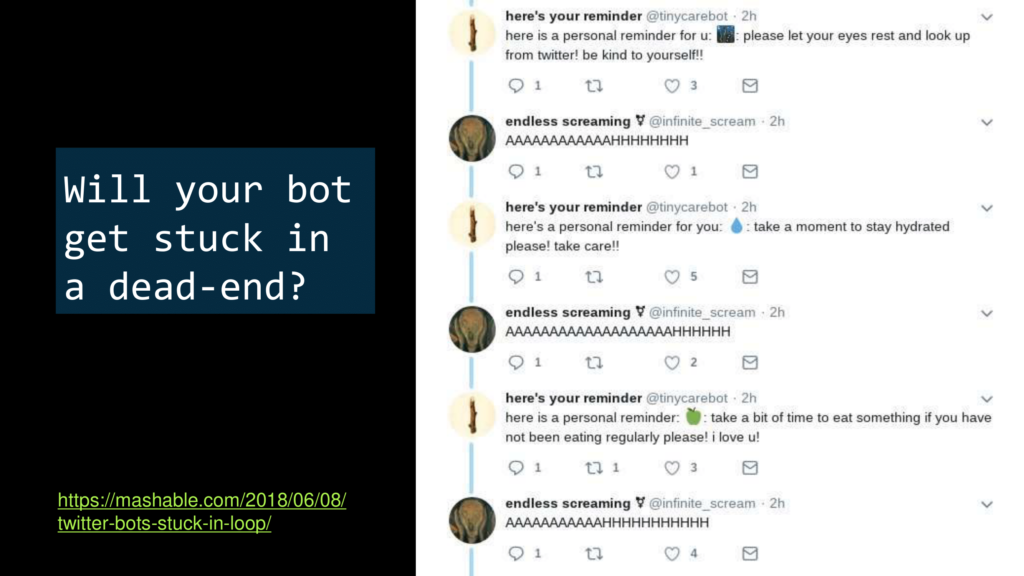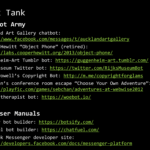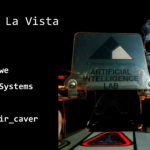Paul Rowe: Tēnā koutou, tēnā koutou, tēnā koutou katoa. I’m Paul Rowe from Vernon Systems. You may have also met Siri. She’s a celebrity in the bot world. Today I’m going to be introducing you to some of the other bots that I have met.
Bots are pieces of automated software that follow through a set of operations with some degree of independence. Often they’re mimicking human behavior, and they’re becoming increasingly sophisticated. They’ve been adopted by museums for a range of different purposes. Anything from trying to answer visitor questions to sharing collections online.
So this is one of the first bots I ever met. He was called [whisper-hisses] “the warlock” and he came from a place called [whisper-hisses] Firetop Mountain. Which I believe is somewhere near Huntley. He was my guide in a choose-your-own-adventure book.
And so you might think I’m joking but it is actually a kind of bot, just a paper-based, analog one. So the book works through a series of predefined questions, and depending on your answers, you’re led through to further snippets of content and questions. Hot tip: don’t open the door with the skeletons.
And so if we fast-forward to the present, here’s Auckland Art Gallery’s chat bot. It can answer simple questions. So it knows for instance what’s on at the moment, and their opening hours. But it’s also built on top of a concept used in the Send Me SFMOMA app. So it’s hooked into the online collection. So I can for instance command “send me cake!” And sure enough I get virtual cake as represented in the gallery’s collection. And I think I’ve thereby proved that I can have my cake and eat it too.
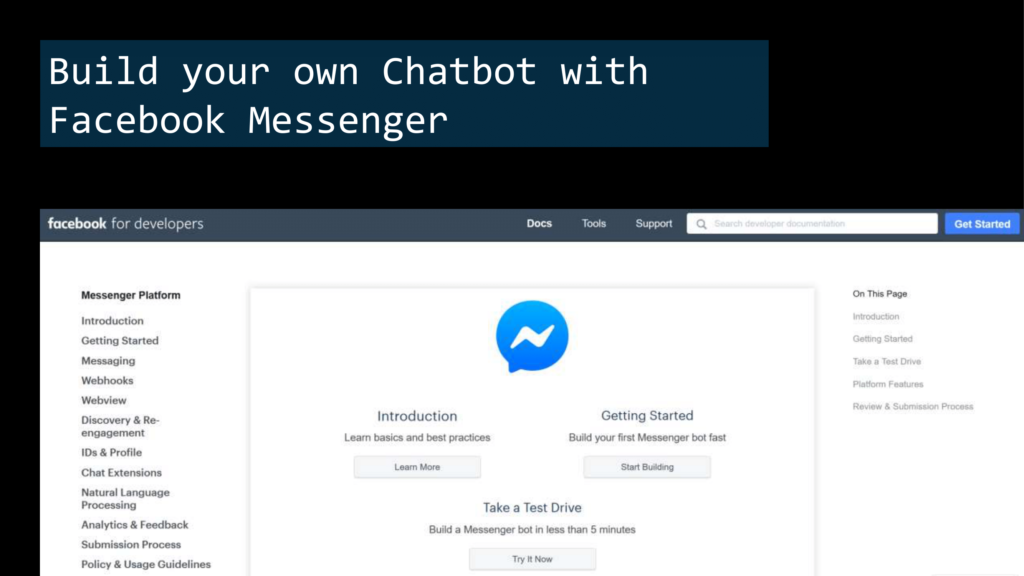
And so that particular chat bot is built using the Facebook Messenger app. This platform already understands natural language, and it’s got a whole programming language for defining the conversation flows and for integrating other kinds of data sources.
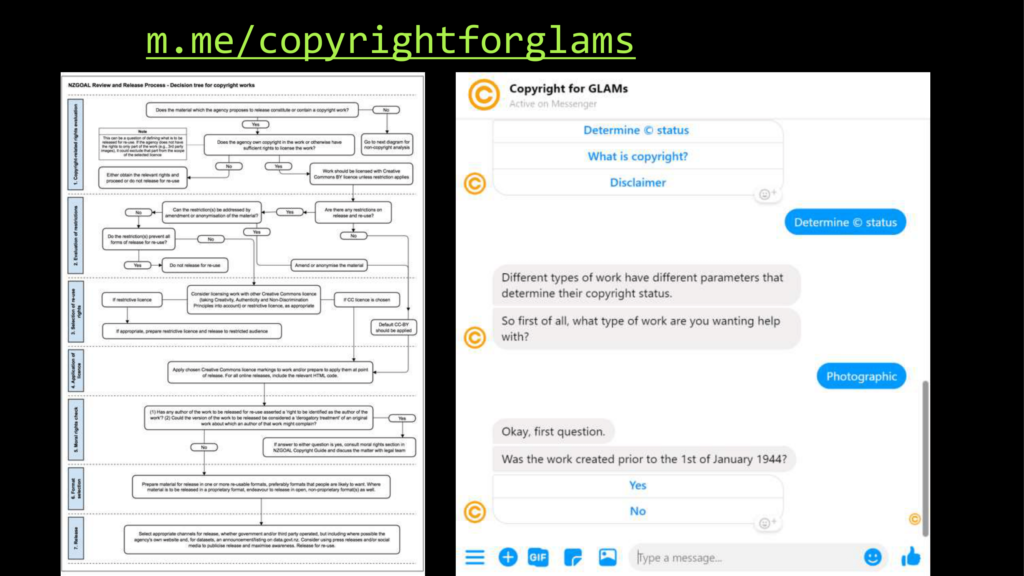
One of my favorite implementations of the Messenger chat bot is Sarah Powell’s copyright bot. It takes the workflow for checking what the current copyright of a work in New Zealand is and then implements that as a simple question and answer chat.
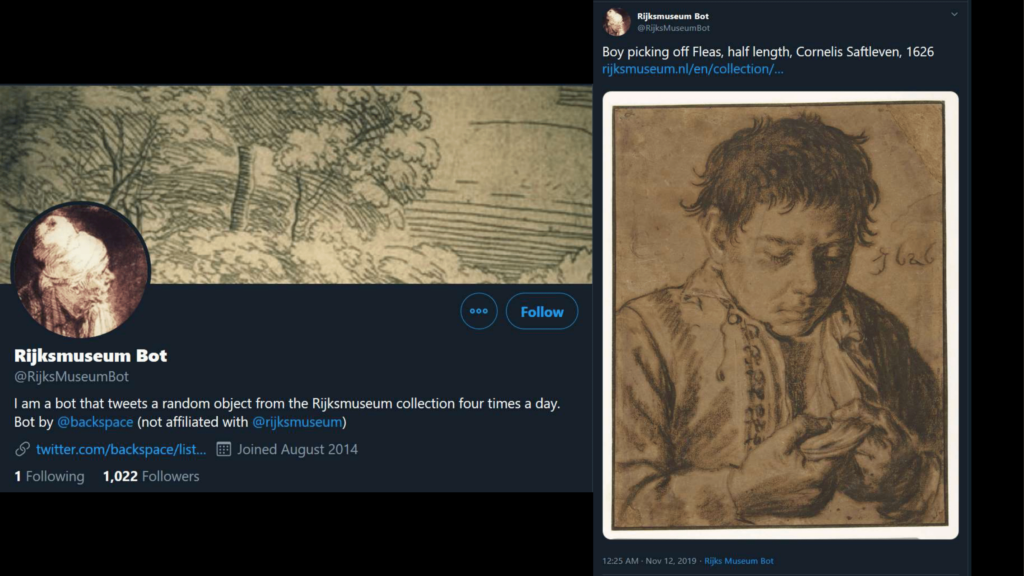
Bots can also be used for the one-way sharing of content. This particular example uses Twitter’s API to share four images every day from the Rijksmuseum’s collection. And that can help uncover gems that maybe wouldn’t normally be shown to the public, like the intriguing “Boy picking off Fleas” from the 1600s.
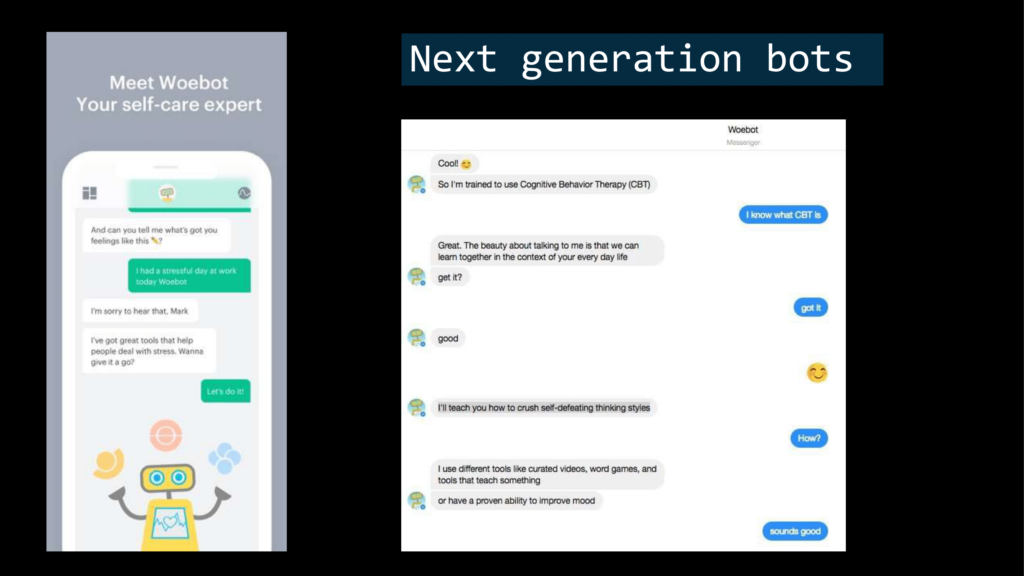
The boundaries of bots are getting pushed forward in several different directions. Some are able to now use self-learning to improve their conversational skills. Others can pull in more detailed data sources, or can understand the context of the visitor such as their location to provide more useful information. This particular example is called the Woebot, and it’s able to provide therapy services in the form of self-help videos and various workflows that people can go through. We’ve also seen now voice-driven bots, for example Siri and Alexa.
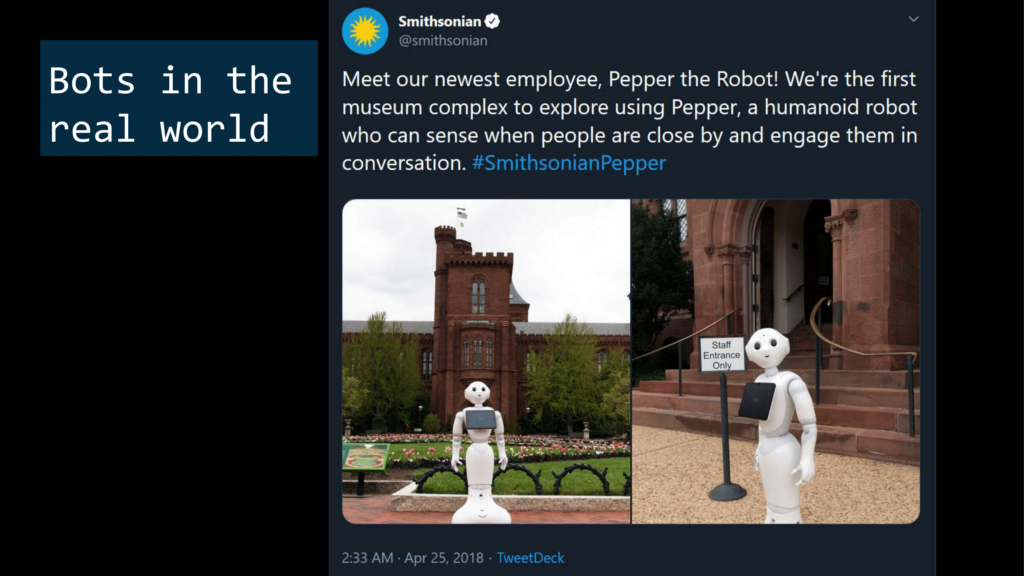
In 2018 the Smithsonian introduced Pepper the Robot, and this actually combined several of these elements. It’s a moving mechanical robot. It’s got some built-in scripted conversations. It’s even got a few dance moves built in. And it has a tablet for displaying image and video responses. They’re using it as a way of greeting visitors, and it’s a novel way of engaging them. My only concern is that we’re starting to enter into uncanny valley as these bots are slowly getting closer at mimicking us.
And so there are ethical considerations around the use of bots. Are people comfortable with sharing things like their location with a bot? What happens to the data that the bot’s gathering as you interact with it? So these are things to think about as you implement these different systems. Are we also comfortable with being in the hands of digital giants such as Amazon and Facebook?
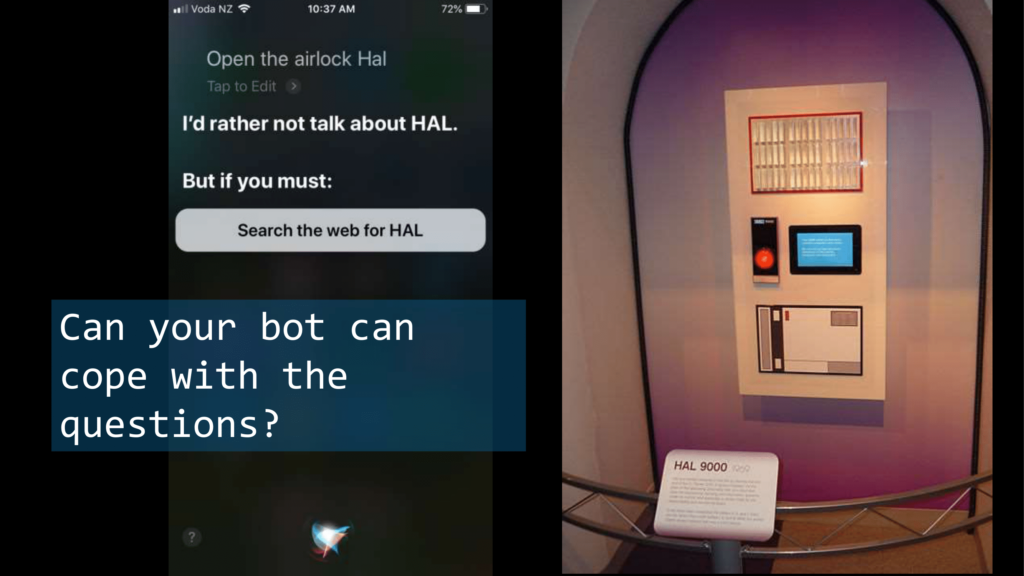
If you’re building a chat bot you also need to see that it can answer a reasonable range of typical visitor questions. So do some thorough testing. We don’t want a situation like here where I asked Siri, “Open the airlock HAL,” and then surprisingly she wasn’t willing to discuss the topic.
You also need to plan out that decision tree in a chat bot and think about what’ll happen if the bot gets into a dead end. We don’t want a situation like here where a personal reminder chat bot got stuck in a continuous circle with the Endless Screaming bot. “Reminder. AHHHHH! Reminder. AHHHHH!”
So if you’re not willing to write any code, there are actually out-of-the box solutions that can let you build up these conversation workflows without writing any code. So they’re mature systems and there are several on the market, including Chatfuel and Botsify.
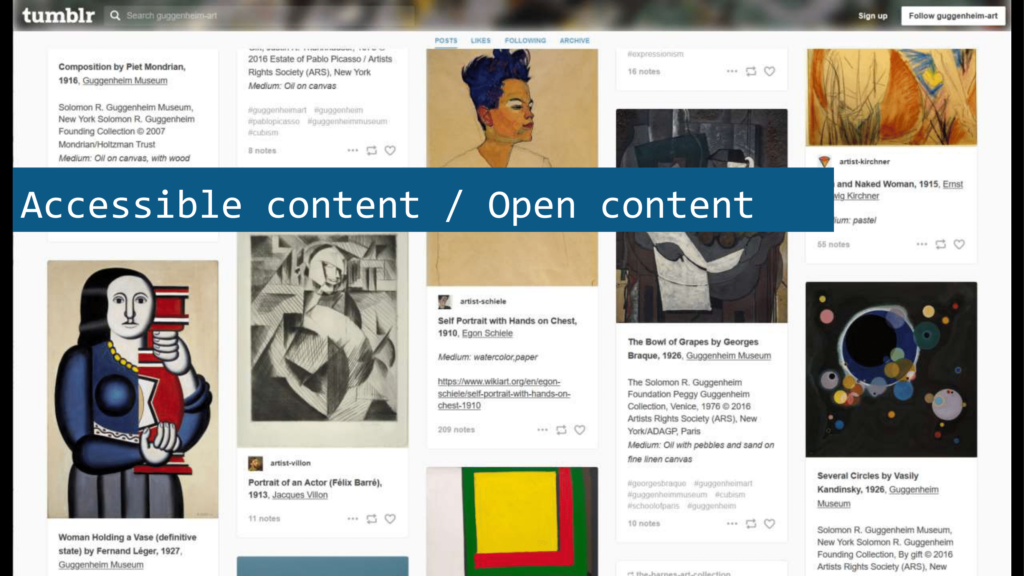
Here’s an example from the Guggenheim Museum. The Guggenheim Tumblr account again is posting random samples of their content. But the difference here is that it’s written by an independent person that just loves this collection. And so for me meeting these different bots has just reinforced one thing: the images that you’re capturing, the online collections you’re sharing, just provide a foundation for all different ways of engaging your audience. The more accessible your content is, the more open the licenses you use, the more chance you’ve got of having your content used in new and different ways.
I’ve created a slide with links to all of the bots that I’ve mentioned today and the other related tools. So I’ll put all of that up on Slideshare. And as a bonus there’s a link to Seb Chan’s conference-themed choose-your-own adventure. Hasta la vista.
Further Reference
National Digital Forum 2019 event page
